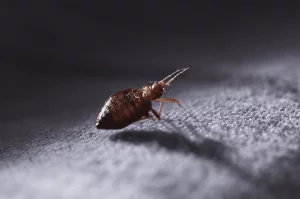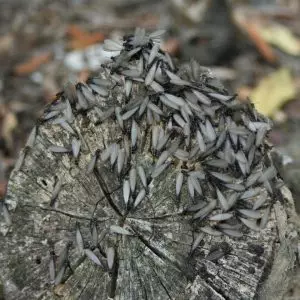A termite’s a termite, right? We wish it were that simple. There are actually a lot of differences between termite types and termite species. If you get drywood termites in your home, they are going to present a different problem than subterranean termites. And they are going to require a different strategy for treatment. Here are a few things you should know.
Drywood Termites
You already know quite a bit about this termite by looking at its name. These termites prefer drywood. That means they’re going to feed on your window sills, door frames, and other hardwood building materials. They’re also going to feed on furniture. If you have antiques or furniture keepsakes that are made of wood, these termites could ruin your day.
Each year, termites cost U.S. property owners billions of dollars, but only a fraction of that is drywood termite damage. Estimates for drywood termite damage is in the hundreds of millions. One big reason for this is drywood termites are not nearly as stealthy as subterranean termites. As they feed on wood, they push their feces out kick-out holes. Though these tiny droppings are often mistaken for sawdust, sand, or some kind of pellet, they are hard to miss. And the appearance of these hard droppings is enough to alert a property owner to the danger.
Subterranean Termites
These termites are also called ground termites. As you can probably guess, they come up from the ground to feed on a home. They prefer soft or decaying wood, but have no problem moving into sound, hard timbers. When they do, they can literally total a man-made structure.
Formosan and Asian termites are both subterranean termites. You’ve probably heard of them. Of all the subterranean termites in the world, these two are the most destructive. One reason they do more damage is that they both are able to establish nests in the walls of a building. This gives the worker termites less distance to travel to acquire food.
Control For Drywood Termites
When these termites get into the walls of a man-made structure, a direct application of termiticide may be used to arrest the infestation, or the entire structure may need to be fumigated. In the event of a fumigation, a tent must be constructed to contain the gases used in the fumigation.
Fumigation can also be the solution for smaller infestations, like a piece of furniture infested with drywood termites. In these cases, we may suggest vault fumigation. At our West Palm Beach location, we have a room that is built to do fast fumigations on furniture items.
Control For Subterranean Termites
The best way to control this type of termite is to be proactive. With our Advanced Termite Baiting System, we’re able to monitor for termite activity and quickly eliminate termite threats when they appear. A certified pest control technician does routine inspections of the discrete bait stations. When termites are found feeding on the bait, the cartridge is replaced with another cartridge that contains an active ingredient that is delivered to the invading colony by way of worker termites. Within 120 days or less, the colony, and the threat is eliminated. This termite control product requires no trenching, drilling, or use of termiticides.
Some property owners prefer a liquid barrier treatment. This is also an effective control method to prevent termite damage. At Nozzle Nolen, we use Termidor, the #1 termite control product in the United States. Not only does Termidor work to kill worker termites, it has a transfer effect that works like bait. When termites crawl through the product–which they cannot detect–they share it with other termites each time they groom, and they groom a lot. This allows the active ingredient fipronil to make it all the way to the queen. In as little as 90 days, the colony is eliminated.
If you own a home in South Florida, no matter what type of termite you’re dealing with, turn to Nozzle Nolen for termite control you can trust. Our termite service is backed by our No Fine Print Million Dollar Guarantee for all homes that qualify. Find out if your home qualifies. Reach out to us today.

